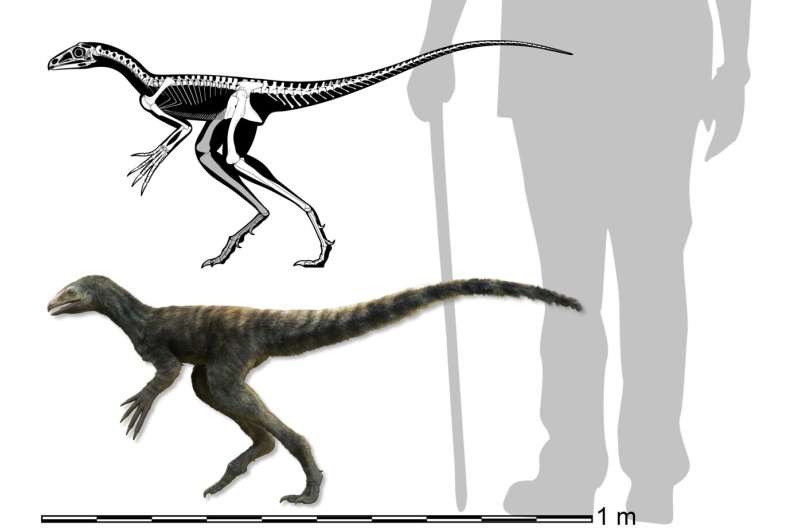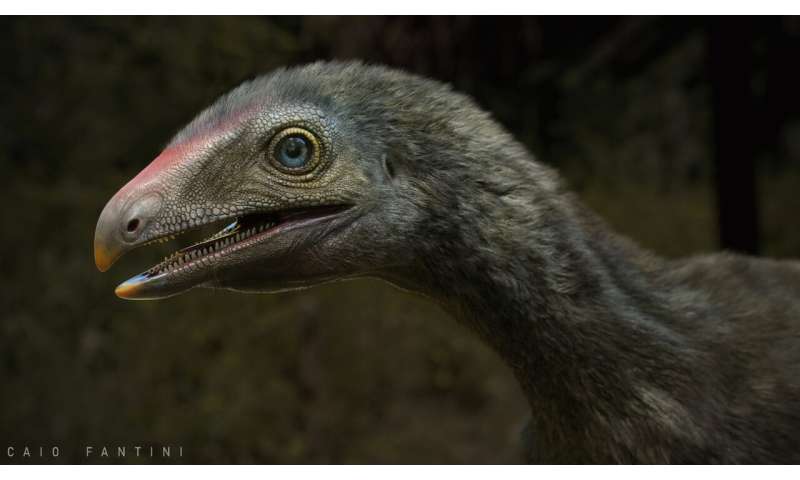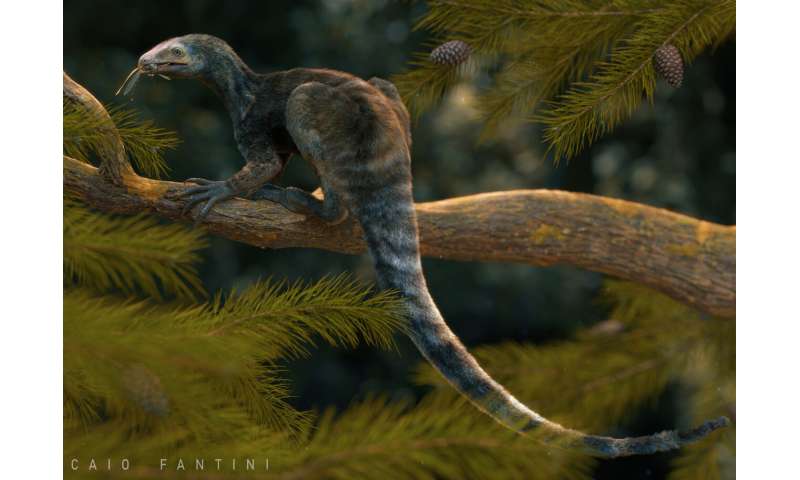August 17, 2023 report
This article has been reviewed according to Science X's editorial process and policies. Editors have highlighted the following attributes while ensuring the content's credibility:
fact-checked
peer-reviewed publication
trusted source
proofread
Researchers find fossilized nonflying precursor to pterosaur in Brazil

A team of paleontologists from Brazil, Argentina and the U.S., has found the fossilized remains of a creature they describe as a precursor to the pterosaur at a dig site in Rio Grande do Sul, Brazil. In their paper published in the journal Nature, the group describes features of the fossil, where it was found, its condition and where it fits with other ancient creatures.
Prior research has shown that during the late to middle Triassic, dinosaurs became the dominant form of life on land while pterosaurs dominated the skies. In this new effort, the researchers found a fossil from before that time, when land-bound pterosaur precursors roamed parts of what is now Brazil. The fossil has been dated back to approximately 230 million years ago.
The team describes the fossil as a well-preserved partial skeleton—it was found embedded in a layer of rock. They also note that it was a lagerpetid that had not been identified before. They named it Venetoraptor gassenae.
-

Artist interpretation of Venetoraptor gassenae. Credit: Caio Fantini -

Artist's interpretation of Venetoraptor gassenae in a Triassic landscape. Credit: Caio Fantini
The fossil revealed a small, land-dwelling, four-legged, bipedal creature—likely standing no more than 0.3 meters at the hips and likely no more than a meter long. It also had a toothless beak reminiscent of those sported by modern raptors.
It also had big hands with scimitar-like claws. The researchers suggest that V. gassenae was likely a specialized creature. Its claws appear to have been used to climb trees or perhaps to capture prey. And it likely used its beak in much the same way modern raptors do—to feed, vocalize or even as part of sexual encounters.
The fossil was found in a rock layer in the Santa Maria Formation, which is located in the Paraná Basin—a site that hosts a large number of ancient fossils. Its age, the team notes, suggests that it lived alongside the earliest dinosaurs.
The find adds more evidence to theories that lagerpetids are more closely related to pterosaurs than dinosaurs. Such theories suggest that eventually, a common ancestor between lagerpetids and pterosaurs arose, leading to the latter dominating the skies.
-

Fossil of Venetoraptor gassenae. Credit: Janaína Brand Dillman -

Fossil of Venetoraptor gassenae. Credit: Janaína Brand Dillman
More information: Rodrigo T. Müller et al, New reptile shows dinosaurs and pterosaurs evolved among diverse precursors, Nature (2023). DOI: 10.1038/s41586-023-06359-z
Journal information: Nature
© 2023 Science X Network





















